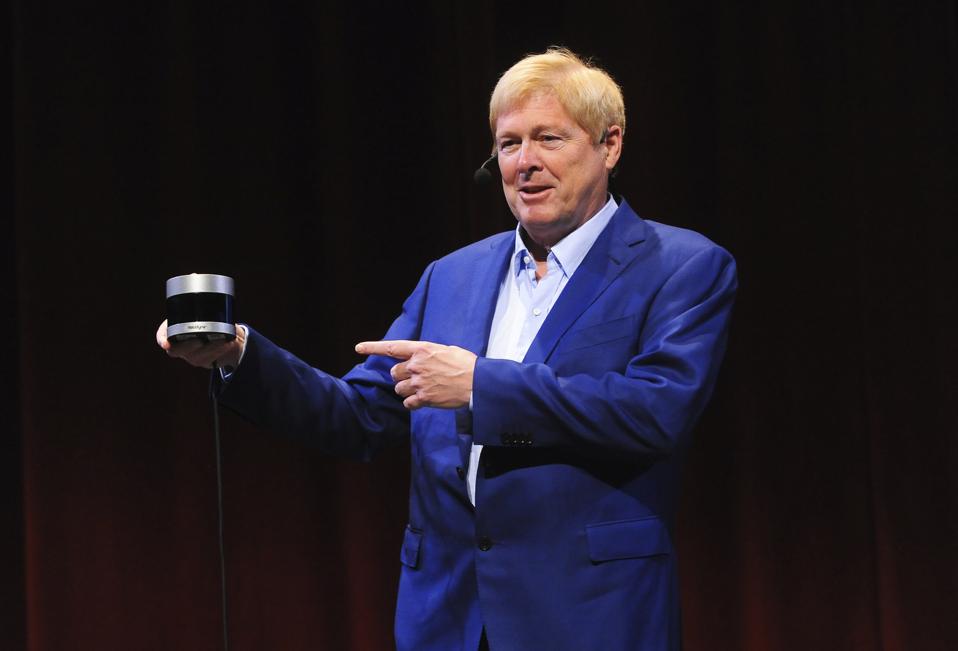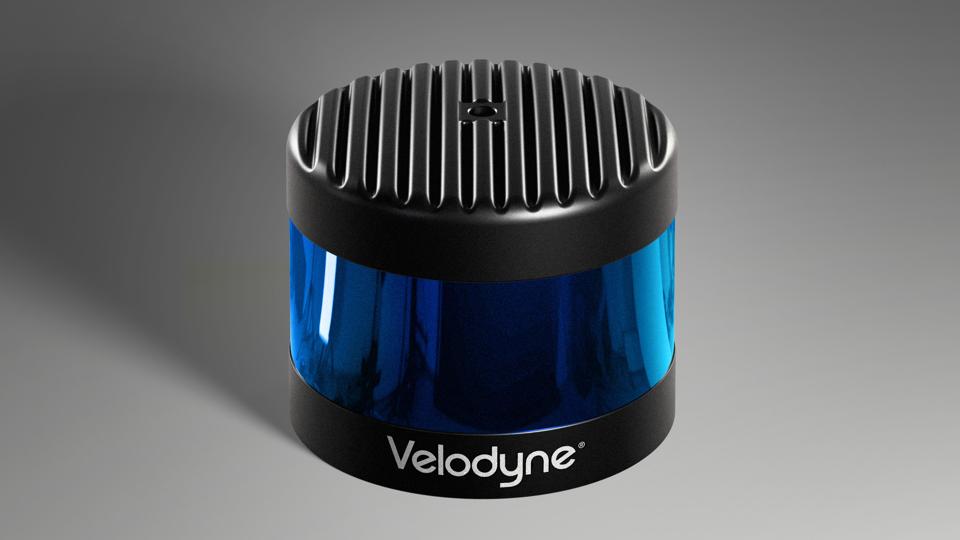
Velodyne CEO and founder Dave Hall is finding new automotive applications for the laser lidar technology he developed more than a decade ago. Velodyne
Spinning laser lidar sensors, invented by Velodyne’s David Hall more than a decade ago, helped kick off a race to create self-driving cars. As his company marks a sales milestone for its vision technology, Hall is expanding into cheaper, modified sensors for use in advanced driver-assistance systems (ADAS) that are heading to market ahead of driverless vehicles.
The company, which has supplied lidars to almost every self-driving car program at some point since 2007, has shipped 30,000 of the laser sensors since it started making them, generating cumulative sales of $500 million, CEO and founder Hall told Forbes. Velodyne continues to expand sensor production for self-driving fleets, but there’s demand for shorter-range units for ADAS safety tech, monitoring road conditions, blind spots and objects in a driver’s path.
“The market is changing a little bit, and we’re trying to aim a little bit toward the ADAS end now, where we have lower product costs and higher volume,” he said. Velodyne has “nice stuff” for highly automated Level 4 self-driving cars, but “I don’t see an urgency to expand our Level 4, Level 5 offerings, whereas we’re seeing a lot of enthusiasm for blind spot and the ADAS stuff. … You can get some much bigger revenue from this path than you can with the Level 4, Level 5 today.”
Velodyne’s “nice stuff” includes a top-of-the-range spinning lidar with 128 individual laser beams that sees up to 300 meters ahead. Hall believes it generates the most detailed images of any product on the market. Each one also costs thousands of dollars and isn’t yet widely available.

Velodyne’s AlphaPuck lidar has 128 laser beams, spinning around, to create highly detailed point cloud, 360-degree, 3D maps.Velodyne
Lidar’s ability to generate detailed, ghostly 3-D point-cloud maps of a moving car’s surroundings in all lighting conditions, working in tandem with cameras and radar, gives self-driving cars awareness of road conditions that’s superhuman. And for years, Velodyne had a near monopoly on that market, allowing it to sell its benchmark, bucket-shaped 64-beam units for up to $70,000 each. But in the past few years dozens of rivals, notably Luminar, Innoviz, AEye, LeddarTech, Ouster, TetraVue and a host of Chinese startups popped up to challenge its dominance.
At the same time, Waymo, Alphabet Inc.’s well-funded autonomous vehicle tech unit, which purchased Velodyne sensors when it was the Google Self-Driving Car project, now makes its own. This month, Waymo also said it will sell its short-range “Laser Bear Honeycomb” lidar to companies it’s currently working with.
Closely held Velodyne, which Hall founded in the 1980s as a maker of high-end audio components, has formed strategic alliances with three key investors in the past few years, with Ford, China’s Baidu and camera maker Nikon investing a combined $200 million.
Those outside investments, the first in the private company’s history, helped fund a highly automated 200,000-square-foot “megafactory” lidar plant in San Jose, California, in 2017 that gave it more production capacity than any competitor—for now at least. Nikon is also setting up a lidar assembly line in Japan in partnership with Velodyne, and it has a strategic licensing deal with Veoneer, a unit of Swedish auto parts giant Autoliv, to help boost production of its sensors to millions of units a year worldwide, Hall said.
(For more on Hall and Velodyne, see Eyes On The Road: How A 34-Year-Old Audio Equipment Company Is Leading The Self-Driving Car Revolution)
Competition and market conditions forced Velodyne to make some strategic changes, but also pushed it to work on better, cheaper types of lidar, Hall said. One change on the way is lidar with an integrated digital camera, something competitors such as startup Aeva are promoting. Hall declined to say when that would go on sale.
Ever the inventor, he’s also got plans to eventually offer software to automate highway driving, a system along the lines of Tesla’s Autopilot and General Motors’ Supercruise, but Hall also couldn’t say when that would be ready. Given the many years he’s worked on lidar for autonomous vehicles and the success Velodyne has had, Hall says he isn’t afraid of new competition.
“We’re not convinced that the ultimate lidar has been invented by anybody yet. We still have an active program to try to hammer this thing into its final shape.”